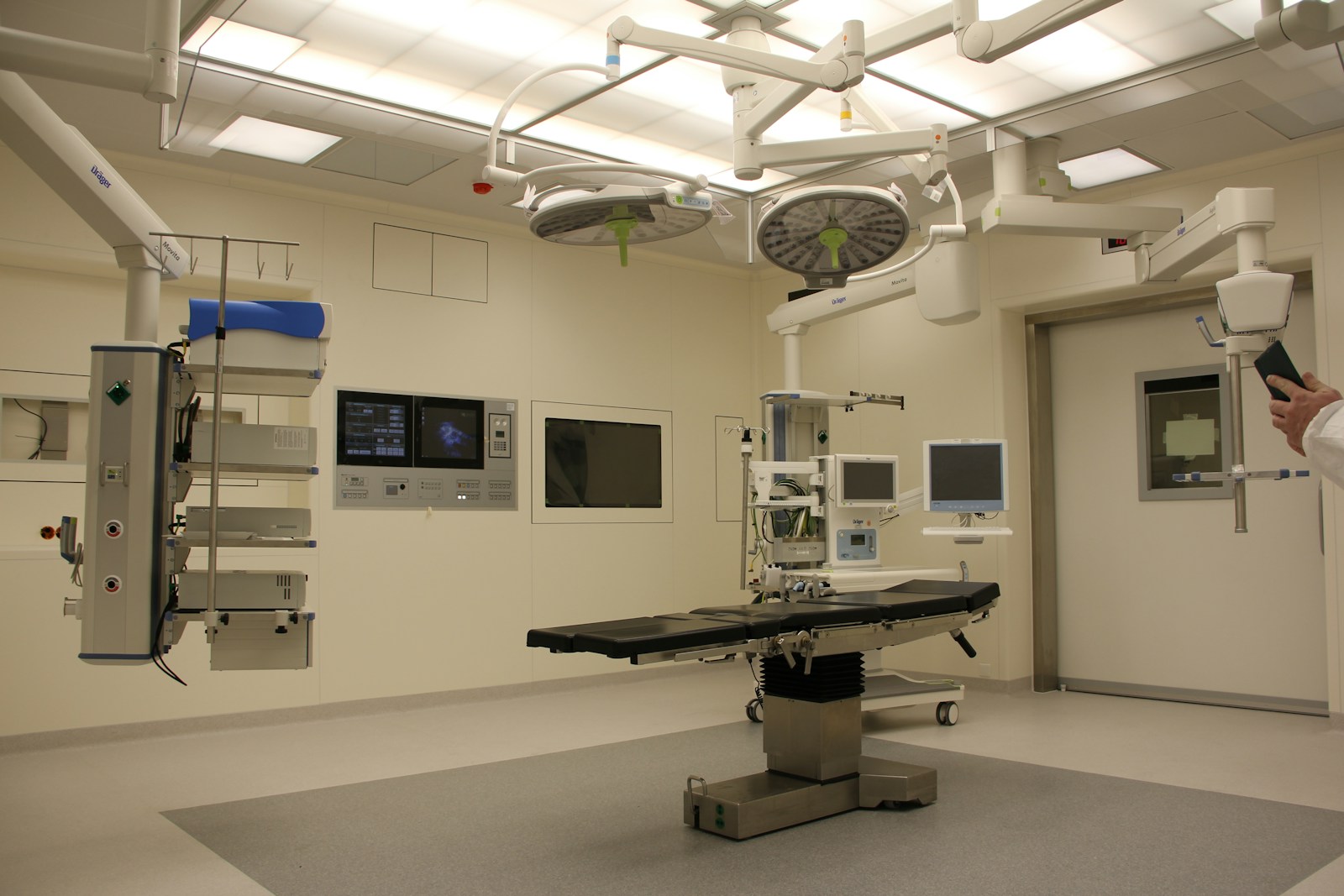Laser spine surgery exhibits favorable success rates, largely due to its precision, minimally invasive procedures, and reduced recovery periods. Aiding factors such as patient’s health, surgeon’s expertise, and thorough post-operative care also significantly impact these metrics. Quantitative data and qualitative testimonials corroborate a significant decrease in pain levels, enhanced mobility, and improved daily life activities after undergoing the procedure. However, the likelihood of success varies on an individual basis, depending largely upon pre-existing conditions and demographic characteristics. Hence, probing deeper into specifics of the surgery and individual circumstances might render a better picture about its potential outcomes.
Understanding Laser Spine Surgery
To fully grasp the concept of laser spine surgery, one must delve into the intricate details of this advanced surgical procedure that utilizes laser technology for precision and minimal invasiveness. The success of such operations is heavily reliant on two key factors: laser equipment calibration and the surgeon’s skill level.
Laser equipment calibration plays a vital role in the procedure’s success as it guarantees the laser’s accuracy. Accurate calibration allows for precise ablation or cutting of the spinal tissue, reducing risks associated with traditional spine surgeries like bleeding and infection. It also facilitates faster patient recovery due to the minimal invasiveness of the procedure.
Conversely, the surgeon’s skill level is of utmost importance. The surgeon must not only possess a deep understanding of spinal anatomy but also be proficient in handling and operating the laser equipment. An expert surgeon can leverage the precision of the calibrated laser to perform intricate procedures, minimizing potential damage to surrounding tissues and nerves. As a result, a combination of well-calibrated laser equipment and a skilled surgeon increases the success rate of laser spine surgeries, making it a preferred choice for treating various spinal conditions.
Historical Overview of Spinal Surgeries
While the success of laser spine surgery depends on calibrated equipment and the surgeon’s expertise, one can better appreciate its significance by examining the evolution of spinal surgeries throughout history. The journey of spinal surgery evolution began with simple procedures in the 19th century, where manual incisions and bone removal were performed to alleviate pain.
Pioneering surgeons of the early 20th century made significant strides in advancing these procedures, particularly Harvey Cushing, who was instrumental in developing the field of neurosurgery. These advancements marked the start of an era where spinal surgeries shifted from high-risk procedures to becoming more viable treatment options.
By the mid-20th century, spinal fusion surgery had become a standard procedure, aimed at eliminating movement between vertebrae to reduce pain. However, this approach often resulted in long recovery periods and the possibility of future complications.
The late 20th and early 21st centuries witnessed a revolution in spinal surgery with the advent of minimally invasive techniques and laser technology. Laser spine surgery, characterized by less scarring and faster recovery times, represents the culmination of years of surgical evolution and the tireless efforts of pioneering surgeons.
How Laser Spine Surgery Works
In the domain of laser spine surgery, the in-depth principle revolves around using a concentrated beam of light to remove or shrink the damaged or problematic tissue causing discomfort or pain. This intricate procedure is an outcome of the laser technology evolution, which has seen significant advancements over the years.
The laser, which operates at a specific wavelength, is introduced via a thin tube or catheter. This non-invasive technique allows surgeons to target the problematic area with high precision, thereby minimizing harm to the surrounding healthy tissue. The heat generated by the laser beam cauterizes the blood vessels, reducing bleeding and promoting a swift recovery.
However, the execution of this technology is contingent on the surgeon’s expertise, highlighting the importance of stringent surgeon training requirements. Surgeons must undergo thorough training to master the use of laser technology. This encompasses understanding laser physics, safety protocols, and surgical techniques.
Moreover, they’re trained to interpret radiographic imaging that guides the laser’s positioning. The surgeon’s ability to navigate the spine’s intricate structure, while manipulating the laser, is a pivotal factor in the success of this surgery. The intersection of laser technology evolution and rigorous surgeon training underscores the efficacy of laser spine surgery.
Advantages of Laser Over Traditional Surgery
Laser spine surgery offers several advantages over traditional methods, primarily in the areas of surgical precision and recovery time. The laser’s pinpoint accuracy allows for a more targeted approach, resulting in less damage to surrounding tissues. Moreover, patients typically experience a reduced recovery period due to the minimally invasive nature of the procedure.
Precision in Laser Surgery
The surgeon’s ability to perform procedures with heightened precision marks one of the significant advantages of laser spine surgery over traditional methods. This precision is largely due to advancements in laser calibration and surgical robotics.
These technological advancements allow for:
- Accurate targeting: The laser can pinpoint specific areas, reducing the risk of damaging surrounding tissues.
- Minimized human error: Surgical robotics can make precise movements, eliminating potential tremors or slips.
- Consistent outcomes: Laser calibration guarantees the same level of energy is delivered each time, leading to predictable results.
- Adaptable procedures: The procedure can be tailored to the patient’s unique anatomy, allowing for a more personalized treatment.
This meticulous approach not only enhances surgical outcomes but also fosters a higher success rate in laser spine surgery.
Reduced Recovery Time
While the precision of laser spine surgery contributes to its high success rate, another notable advantage is the greatly reduced recovery time compared to traditional surgical methods. The less invasive nature of laser procedures results in notably less trauma to the surrounding tissues, enabling a quicker healing process.
This expedites post-surgery mobility, allowing patients to commence their rehabilitation exercises sooner. The sooner patients begin these exercises, the better their chances of regaining full functionality and strength in the affected area. Moreover, a shorter recovery period also reduces the likelihood of complications arising from prolonged immobility, such as blood clots or muscle atrophy. Hence, the reduced recovery time is not only beneficial from a convenience perspective but is also instrumental in ensuring excellent clinical outcomes.
Evaluating Success Rate Metrics
In examining the success rates of laser spine surgery, it is vital to thoroughly understand and grasp the underlying metrics employed. These metrics are commonly evaluated through a comparative analysis of various factors and patient testimonials, which provide qualitative insights into the post-surgical recovery and satisfaction rates.
The primary metrics for evaluating the success rate of laser spine surgery include:
- Patient satisfaction: This measures the level of contentment patients feel post-surgery. Patient testimonials can be invaluable in appraising this metric.
- Pain reduction: The decrease in pain level post-surgery is a strong indicator of successful treatment.
- Functionality: This evaluates the improvement in patients’ daily life activities and mobility after the surgery.
- Reoperation rate: A lower reoperation rate suggests a higher initial success rate of the surgical procedure.
Review of Clinical Studies
Numerous clinical studies have been conducted over the years to gauge the effectiveness of laser spine surgery, providing a wealth of data for a meticulous and scientifically rigorous analysis. These studies have explored various aspects, including pain relief, functional improvement, and patient satisfaction, presenting detailed insights into the procedure’s efficacy.
However, it is crucial to take into account the study limitations in interpreting these outcomes. Some studies have small sample sizes, which may limit their generalizability. Others may lack a control group, making it hard to attribute the observed outcomes solely to the laser spine surgery. Moreover, the absence of long-term follow-up data in some studies raises questions about the durability of the reported benefits.
Equally important is the comparison of laser spine surgery with surgical alternatives. Studies have shown that traditional open spine surgery can sometimes provide equal or even superior outcomes, especially for more complex cases. Yet, laser surgery often exhibits less invasiveness, shorter recovery periods, and reduced postoperative pain, making it a crucial choice in certain situations.
Real-Life Success Stories
In order to further analyze the efficacy of laser spine surgery, we turn our attention to real-life success stories, focusing on patient recovery journeys and notable surgery outcomes. These narratives provide invaluable insights into the patient’s perspective, detailing the extent of their recovery and the overall impact on quality of life post-surgery. By examining these case studies, we can form a deeper understanding of the tangible benefits and potential limitations of this surgical method.
Patient Recovery Journeys
Examining real-life patient recovery journeys offers invaluable insights into the success rate of laser spine surgery. These journeys, often depicted through patient testimonials, provide a candid view of the emotional healing process post-surgery.
- A 45-year-old male patient reported an 80% reduction in back pain within a week, a significant improvement in his quality of life.
- A 60-year-old woman, previously unable to walk due to severe spinal stenosis, regained mobility after surgery.
- A young athlete returned to competitive sports within two months, exceeding expectations.
- An elderly patient with chronic back pain reported being pain-free for the first time in decades.
These anecdotes, while individual, paint a promising picture of laser spine surgery’s potential efficacy.
Notable Surgery Outcomes
Exploring the domain of real-life success stories uncovers the remarkable outcomes of laser spine surgery, offering concrete evidence of its potential benefits. The last ten years have seen noteworthy surgery innovations, with laser spine surgery standing out as a minimally invasive, yet highly effective procedure.
One notable case involves a 52-year-old marathon runner who, after years of enduring debilitating back pain, regained her full physical abilities only six weeks post-surgery. Patient perspectives also highlight the rapid recovery time and reduced postoperative discomfort compared to traditional methods.
Another success story features a 38-year-old construction worker who, following a successful laser spine surgery, was able to return to work within three months, underscoring the surgery’s impact on overall quality of life. These cases significantly underline the high success rate of this surgical innovation.
Factors Affecting Success Rates
Several factors play an essential role in determining the success rate of laser spine surgery. To begin with, patient demographics, including age, gender, overall health condition, and the specific nature of their spinal condition, heavily influence the outcome. Younger, healthier patients generally have higher success rates compared to older or medically compromised individuals.
Next, surgery costs and the patient’s ability to afford quality care can also impact the success rate. Economic barriers could limit access to post-operative physiotherapy and other essential recovery services, eventually affecting the surgery’s success.
Moreover, the surgeon’s expertise and the use of advanced surgical technology can dramatically alter the result. To conclude, the patient’s post-operative care, including their commitment to follow-up appointments and dedication to prescribed physical therapy, can significantly impact the outcome.
To summarize, the following factors are critical in determining the success rate of laser spine surgery:
- Patient demographics and health condition
- Surgery costs and accessibility to quality care
- Surgeon’s expertise and surgical technology
- Post-operative care and patient’s commitment to recovery
Understanding these factors allows for a more in-depth view of the potential success and helps patients make informed decisions about laser spine surgery.
Potential Risks and Complications
Despite the promising success rates, laser spine surgery, like any other medical procedure, carries potential risks and complications that warrant thorough evaluation. The most common issues include infection, bleeding, nerve damage, and potential failure to alleviate symptoms. Additionally, patients may experience adverse reactions to anesthesia or post-operative discomfort.
Insurance coverage is an essential factor when assessing these risks. Not all insurance providers cover laser spine surgery, which can lead to significant out-of-pocket expenses. Moreover, some companies may require proof of failed alternative treatments before they agree to cover the procedure. This can further delay the time frame for receiving potential relief from debilitating symptoms.
Alternative treatments, such as physical therapy, pain management, or even traditional spine surgery, are often recommended before resorting to laser spine surgery. These treatments carry their own risk profiles, which should be weighed against the potential benefits and complications of laser spine surgery. To summarize, while laser spine surgery boasts high success rates, patients must carefully evaluate the procedure’s potential risks, insurance coverage implications, and the effectiveness of alternative treatments.
Recovery and Post-Op Care
In the wake of laser spine surgery, post-operative care and a well-planned recovery regimen play pivotal roles in guaranteeing the procedure’s success and minimizing potential complications. This period requires diligent attention from both the patient and the medical team, particularly in aspects such as post-surgery nutrition and mental health recovery.
- Post-surgery nutrition: A balanced diet is essential for the body to heal and regain strength. Protein-rich foods aid in tissue repair while fruits and vegetables provide necessary vitamins and antioxidants.
- Pain Management: Pain is an anticipated part of recovery. It’s important to follow the prescribed pain relief strategy, and report any unbearable discomfort to your doctor immediately.
- Physical Therapy: Regular, guided exercises improve mobility and strengthen the muscles supporting the spine, promoting a faster recovery.
- Mental Health Recovery: Stress, anxiety, or depression can impede recovery. Psychological support through counseling or support groups can be beneficial.
These elements collectively contribute to a speedy and safe recovery, optimizing the success rate of the surgery. The patient’s adherence to these guidelines, coupled with regular follow-ups, ensures a holistic recovery, reinforcing the overall effectiveness of laser spine surgery.
Making the Decision: Is It Right for You?
In determining the suitability of laser spine surgery for an individual, three key factors must be thoroughly examined. These include a thorough understanding of the procedure itself, a detailed analysis of the potential risks associated with the surgery, and an evaluation of the statistical outcomes of the procedure. This process enables a scientifically informed decision, ensuring that the selected surgical intervention aligns with the patient’s unique medical profile and overall health objectives.
Understanding Laser Spine Surgery
Exploring the nuances of laser spine surgery is essential for determining whether this advanced medical procedure aligns with your specific health needs and expectations. Understanding the spinal anatomy basics is necessary, as is appreciating the evolution of laser technology in surgery.
This will include:
- Grasping the intricate structure of the spine, including vertebrae, discs, and nerves
- Comprehending how laser technology can ablate, cut or coagulate soft tissue with precision
- Recognizing the transformative impact of lasers in minimally invasive procedures
- Acknowledging the specific conditions this surgery can address, like herniated discs or spinal stenosis
Ultimately, a thorough understanding of these elements will empower you to make an informed decision about the suitability of laser spine surgery for you.
Analyzing Potential Risks
Having gained an understanding of the basic principles and applications of laser spine surgery, it is equally important to examine the potential risks and complications associated with this procedure to guarantee a well-rounded decision-making process. These can range from infections, bleeding, anesthesia complications to nerve damage. Implementing risk mitigation strategies, such as thorough pre-surgical screening, utilization of cutting-edge technology, and employing skilled surgeons can contribute to minimizing these risks. However, it is crucial to remember that no surgical procedure is devoid of risks. For those who are apprehensive, surgical alternatives like physical therapy or pain management methods can be considered. A thorough understanding of these potential risks, coupled with an evaluation of surgical alternatives, is imperative in making an informed decision.
Assessing Surgical Outcomes
To make an informed decision about whether laser spine surgery is the right choice for you, it is imperative to scrutinize the surgical outcomes, studying the success rates, post-surgery recovery time, and the likelihood of long-term relief from back pain. Surgical innovations have greatly improved these metrics, but patient psychology also plays a significant role in the perception of success.
- A high success rate indicates a high probability of pain relief.
- Short recovery time enables quick return to normal activities.
- Long-term relief translates to an increased quality of life.
- Patient psychology can either enhance or hinder the perception of these outcomes.
Thus, a holistic assessment of surgical outcomes, coupled with an understanding of personal expectations, will guide you in making the right choice.
Frequently Asked Questions
What Is the Cost of Laser Spine Surgery Compared to Traditional Surgery?
The cost of laser spine surgery, factoring in surgery financing and post operative care, can often be higher than traditional surgery due to the specialised equipment and technology involved. Prices vary based on location and complexity.
Are There Any Insurance Companies That Cover Laser Spine Surgery?
Insurance eligibility for laser spine surgery varies across different providers due to distinct coverage policies. It’s important to consult with your insurance provider to understand the extent of coverage for this specific surgical procedure.
How Long Has Laser Spine Surgery Been Performed in the Medical Field?
Laser spine surgery, a surgical innovation, has been performed in the medical field since the 1980s. This procedure is praised for its shorter recovery period compared to traditional open-back surgery.
Are There Specific Medical Conditions or Circumstances Where Laser Spine Surgery Cannot Be Performed?
Certain medical conditions can indeed render laser spine surgery unsuitable. These include severe osteoporosis, morbid obesity, and specific spinal infections. Patient eligibility criteria and laser surgery risks must always be taken into account.
Can Laser Spine Surgery Be Performed on All Sections of the Spine or Are There Limitations?
Laser spine surgery can be performed on various spine sections, but limitations exist due to surgical risks and recovery time. Each patient’s condition is evaluated to determine the procedure’s feasibility and potential benefits.



